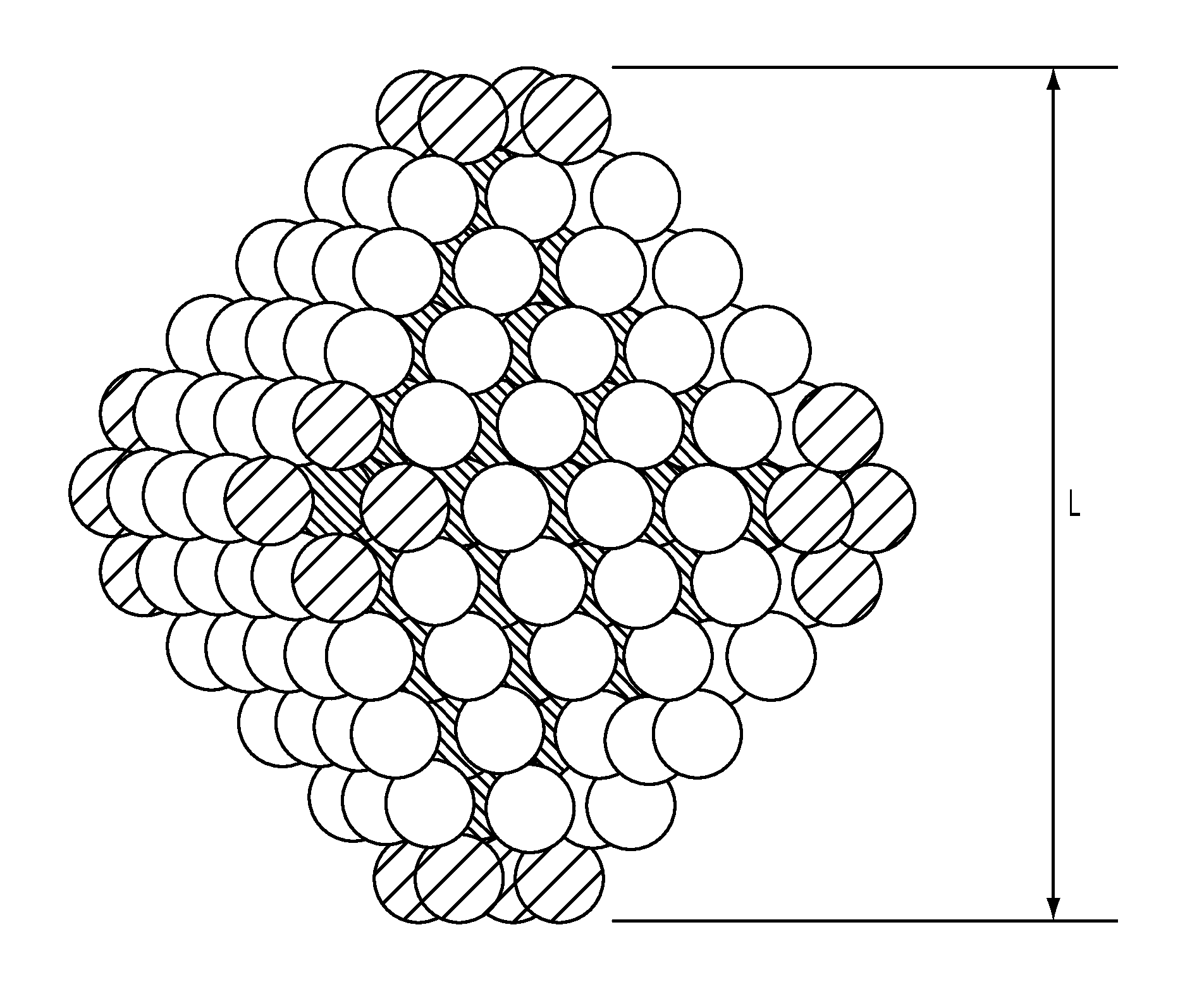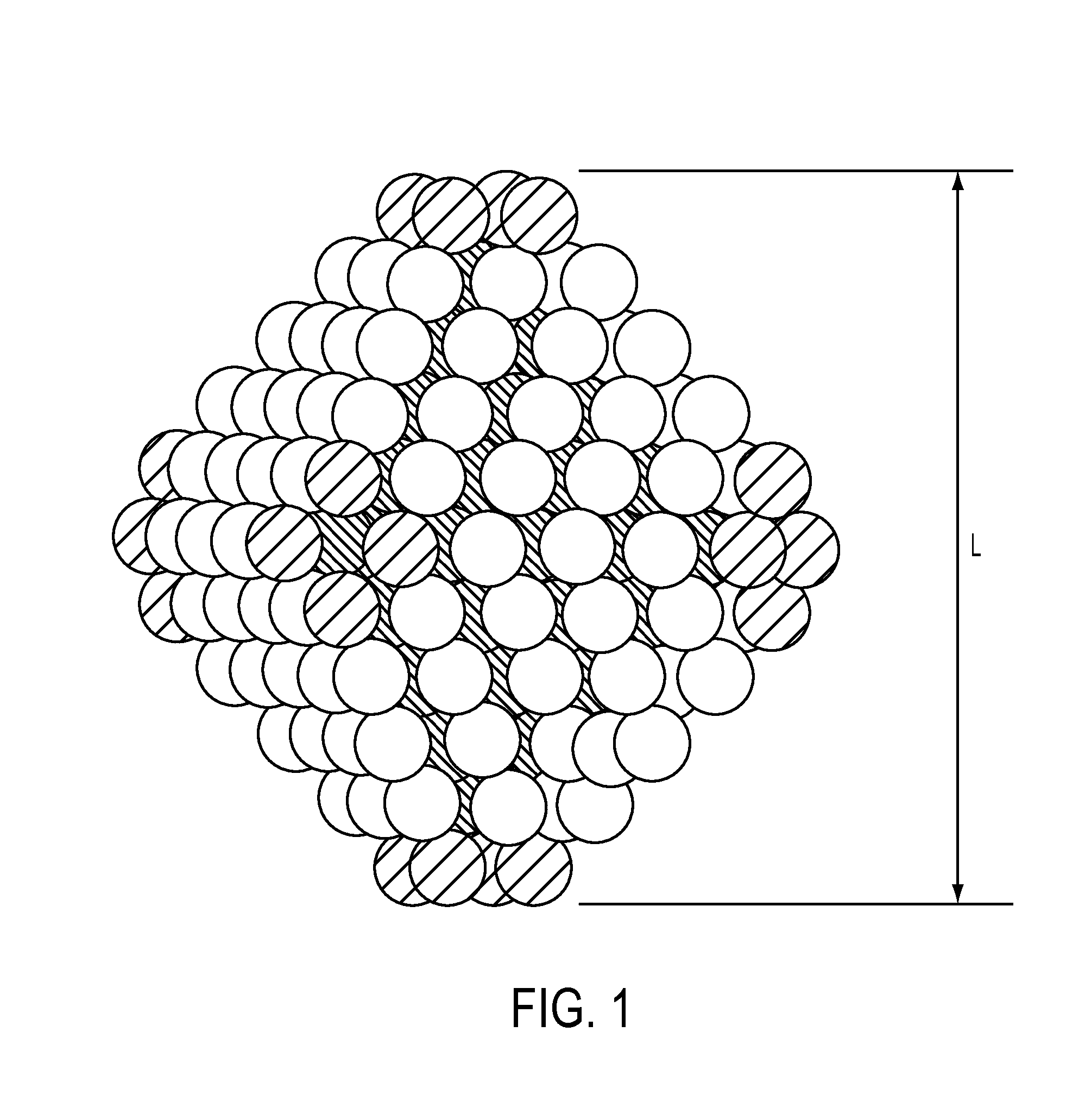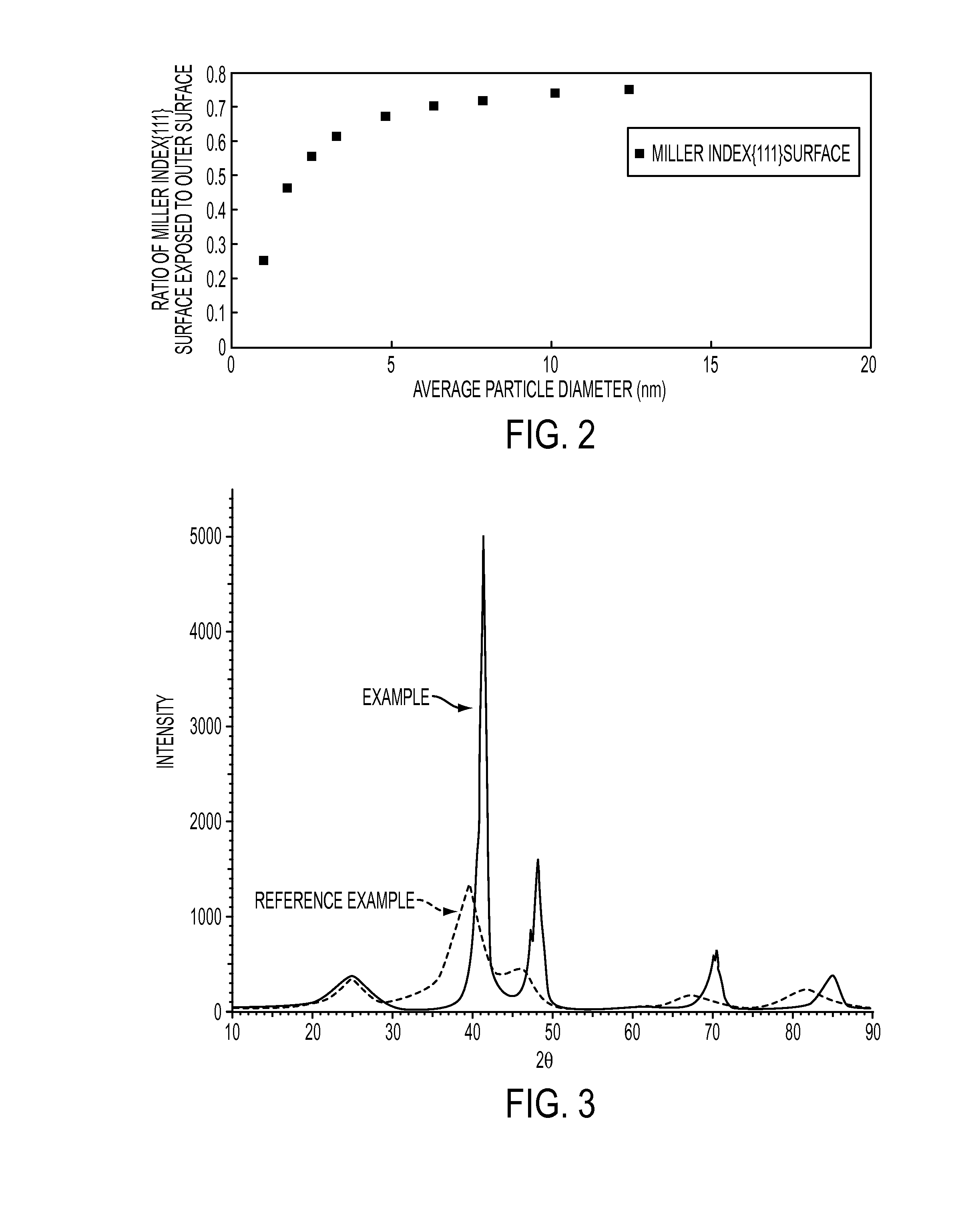Alloy catalyst for redox reaction
a technology of alloy catalyst and redox reaction, which is applied in the direction of physical/chemical process catalyst, metal/metal-oxide/metal-hydroxide catalyst, cell component, etc., can solve the problems of reducing the amount of platinum use and high cost of platinum catalyst, and achieves superior catalytic activity and increase the effect of
- Summary
- Abstract
- Description
- Claims
- Application Information
AI Technical Summary
Benefits of technology
Problems solved by technology
Method used
Image
Examples
example
[0040]In the present example, first, 24 mg of platinum acetylacetonate, 15 mg of nickel acetate tetrahydrate, 50 mL of ethylene glycol, and 26 μL of polydiallyldimethylammonium chloride (PDDA) were mixed in a three neck flask, so as to obtain a mixed liquid.
[0041]Next, while introducing argon to the mixed liquid, the mixed liquid was heated to reflux at a temperature of 140° C. for two hours. By being heated to reflux, the mixed liquid turned black. Next, the mixed liquid heated to reflux was cooled to room temperature by placing the same in atmosphere, so as to obtain a catalyst solution.
[0042]Next, the obtained catalyst solution was added with 144 g of carbon black powder (manufactured by Lion Corporation, product name: carbon ECP), and was mixed by stirring at a room temperature (20° C.) for twelve hours with a magnetic stirrer.
[0043]The catalyst solution mixed with carbon black powder was performed with suction filtration using filter paper (manufactured by Kiriyama Glass Compan...
PUM
| Property | Measurement | Unit |
|---|---|---|
| Particle diameter | aaaaa | aaaaa |
| Particle diameter | aaaaa | aaaaa |
| Ratio | aaaaa | aaaaa |
Abstract
Description
Claims
Application Information
 Login to View More
Login to View More - R&D
- Intellectual Property
- Life Sciences
- Materials
- Tech Scout
- Unparalleled Data Quality
- Higher Quality Content
- 60% Fewer Hallucinations
Browse by: Latest US Patents, China's latest patents, Technical Efficacy Thesaurus, Application Domain, Technology Topic, Popular Technical Reports.
© 2025 PatSnap. All rights reserved.Legal|Privacy policy|Modern Slavery Act Transparency Statement|Sitemap|About US| Contact US: help@patsnap.com



